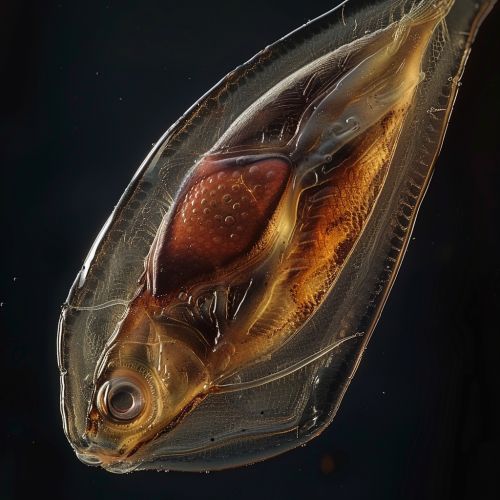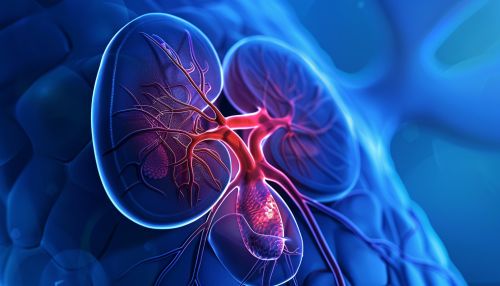Interrenal gland
Anatomy and Location
The interrenal gland is an endocrine gland found in fish, similar to the adrenal gland in mammals. It is located in the head kidney, which is a part of the renal system of the fish. The interrenal gland is composed of interrenal cells that are distributed along the length of the kidney. These cells are usually grouped together and are surrounded by supportive tissue.


Function
The primary function of the interrenal gland is the production and secretion of corticosteroids, specifically glucocorticoids and mineralocorticoids. These hormones play a crucial role in the regulation of a fish's metabolism, immune response, and electrolyte balance. The interrenal gland is also involved in the stress response of fish, producing cortisol, the primary stress hormone in fish.
Hormone Production
The interrenal gland produces two main types of corticosteroids: glucocorticoids and mineralocorticoids. Glucocorticoids, such as cortisol, are involved in glucose metabolism and the immune response. They help to increase blood glucose levels and suppress immune responses. Mineralocorticoids, such as aldosterone, are involved in the regulation of electrolyte and water balance. They promote the reabsorption of sodium and excretion of potassium in the kidneys.
The production of these hormones is regulated by the hypothalamic-pituitary-interrenal (HPI) axis. The hypothalamus produces corticotropin-releasing hormone (CRH), which stimulates the pituitary gland to produce adrenocorticotropic hormone (ACTH). ACTH then stimulates the interrenal gland to produce and release corticosteroids.
Stress Response
The interrenal gland plays a crucial role in the stress response of fish. When a fish is exposed to a stressor, the HPI axis is activated, leading to the production and release of cortisol from the interrenal gland. Cortisol helps the fish to cope with the stressor by mobilizing energy reserves, suppressing non-essential functions such as growth and reproduction, and modulating the immune response.
The interrenal gland also produces catecholamines, such as adrenaline and noradrenaline, in response to stress. These hormones increase heart rate and blood pressure, and stimulate the release of glucose from the liver, providing the fish with the energy needed to respond to the stressor.
Disorders
Disorders of the interrenal gland can lead to a variety of health problems in fish. Overproduction of cortisol, for example, can lead to chronic stress, which can suppress growth, reproduction, and immune function, making the fish more susceptible to disease. Underproduction of cortisol, on the other hand, can lead to Addison's disease, a condition characterized by low blood pressure, weight loss, and muscle weakness.
Research
Research on the interrenal gland has provided valuable insights into the stress response and hormone regulation in fish. This research has implications for aquaculture, where stress is a major concern, as well as for our understanding of endocrine function and stress physiology in general.
